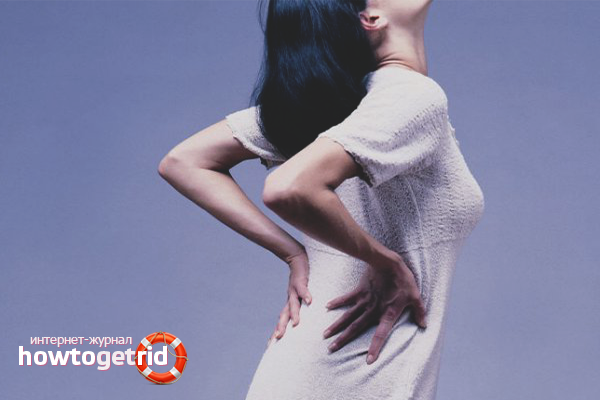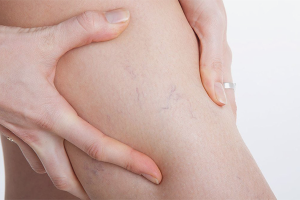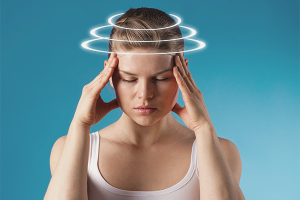The content of the article
- 1 Why does an intervertebral hernia occur?
- 2 Symptoms of a vertebral hernia
- 3 What types of hernia can be treated without surgery
- 4 Conservative methods for the treatment of vertebral hernia
- 5 Treatment of vertebral hernia with drugs
- 6 Spinal Stretch Procedures
- 7 Electrical stimulation of nerve endings
- 8 Ultrasound spinal hernia treatment
- 9 Bioelectronic treatment
- 10 Correction with corsets and bandages
- 11 Exposure to heat and cold
- 12 Video: how to get rid of an intervertebral hernia
Intervertebral hernia is called pathological changes in the structure or shape of the fibrous ring of the vertebra. These changes can be with rupture of the shell or protrusion of the disk. The disease is very serious, especially in the case when the nucleus is displaced, it can enter the spinal canal and injure the nerve.
Very often, for the treatment of intervertebral hernia, surgical intervention is required, in some cases when the patient asked for medical help on time, other types of therapy can be dispensed with.
An intervertebral hernia can form in any part of the spine, most often it occurs in the thoracic, cervical or lumbar regions. It is possible to recover from this disease with the help of massage, physiotherapy exercises. There are also many folk remedies, but before choosing a method of treatment, a thorough diagnosis by an experienced doctor is necessary.
Why does an intervertebral hernia occur?
The disease can occur for various reasons, the most common include:
- injuries
- hard physical work;
- bad habits;
- sedentary work;
- untreated osteochondrosis;
- rachiocampsis;
- hip dysplasia in babies up to a year.
The formation of an intervertebral hernia may be subsequently injured. It does not appear immediately, in some cases it is detected several years after receiving an injury.
Dysplasia in childhood, if it is improperly treated, brings with it many concomitant diseases, including pelvic distortion, and spinal hernia appears in adulthood.
Osteochondrosis is a disease that occurs as a result of aging of the spinal tissues, and the intervertebral discs become not elastic, as a result - the formation of a hernia under any load.
In people with bad habits, such as smokers, the supply of blood with oxygen is disrupted. As a result of this, all organs and tissues do not receive the substances necessary for the normal functioning. The spine also suffers, so people with bad habits are prone to various kinds of diseases.
In the absence of physical exertion, the back muscles weaken, the entire weight falls on the spine. In addition, the metabolism slows down significantly, and it works like a piston. Low mobility affects the development of osteochondrosis, as a result of which a hernia can develop.
Symptoms of a vertebral hernia
Symptoms of the disease can be different depending on the location of the hernia and its size. Very often, the patient is unaware of his illness. This lasts until the neoplasm involves the nerve endings.
- In patients with a hernia that does not affect the nerve, aching back pain is possible, which is perceived as a symptom of osteochondrosis.
- In cases where a nerve is pinched, the patient develops constant and severe pain, as well as numbness of the limbs. Leg pain is sometimes felt - this is a symptom of pinching the sciatic nerve. In this case, the pain is so severe that it is impossible to take a step, since the feet become very sensitive.
- In cases where an intervertebral hernia occurred in the cervical spine, numbness of the upper body occurs, and pain is given to the thigh.
- Leg pain is a symptom of a hernia of the spine, often the sensations spread mainly to one of the limbs.
- Pain occurs when sneezing or coughing, even if the patient remains motionless. If the nerve is injured, a tingling sensation may occur in the limbs.
What types of hernia can be treated without surgery
With timely treatment, you can completely restore the intervertebral disc and its functions, even in those cases when the hernia protrudes. With this diagnosis, surgery is not required.
When a protrusion of a disk with a rupture of the shell of the nucleus is possible, it is possible to save the patient from pain with the help of conservative treatment in 80% of cases. However, if conservative methods in this case do not bring results, paralysis of the limbs, disruption of the functioning of the internal organs of the small pelvis and a pain sensation are possible.
If the intervertebral hernia is accompanied by a complete rupture of the shell of the nucleus, it becomes impossible to cure it without surgical intervention. With the help of surgery, you can restore the function of the vertebra, but to restore it, as before, will fail.
Conservative methods for the treatment of vertebral hernia
When treating an intervertebral hernia, it is important that the patient does not overload the back and is at rest. Today, in addition to surgical methods for the treatment of intervertebral hernia, there are conservative ones. These include:
- drug therapy;
- physiotherapy;
- acupuncture;
- yoga;
- spinal distension;
- electrical stimulation of nerve endings;
- ultrasound treatment;
- massage;
- bioelectronic communication method.
Treatment of vertebral hernia with drugs
The following groups of drugs are used to treat intervertebral hernia:
Anesthetizing non-steroidal anti-inflammatory
- Diclofenac
- Ibuprofen
- Ketonal
- Indomethocin
These drugs relieve pain, reduce the inflammatory process.
Opioid Analgesic
- Butorphanol
- Pentazocine
- Buprenorphine
- Tramadol
These drugs are designed to relieve severe pain.
Neuralgia Medication
- Baclofen
- Clonazepam
- Sirdalud
- Vitamins of group B.
Muscle relaxants
- Vecuronium
- Rocuronium
- Pipecuronium
- Myvacurium
This group of drugs is designed to relieve muscle cramps.
Cortisone Injection: Done in the pain zone. The tool relieves inflammation and anesthetizes. It can be used simultaneously with corticosteroids.
Spinal Stretch Procedures
The patient is fixed in a special medical equipment resembling a table, being on which an increase in the distance between the vertebrae is made, due to which the pressure between the disks decreases and the hernia ceases to contact with the nerve endings. Such equipment has a significant therapeutic effect on the spine.
Electrical stimulation of nerve endings
Using special equipment, an electrical impulse is passed through the skin in safe doses. These impulses can relieve pain and stimulate nerve endings. This procedure is very effective in eliminating the pain that occurs with a hernia of the spinal disc.
Electrical stimulation is performed without pain relief, as it is not accompanied by any pain. The disadvantage of this method is that it is not effective in chronic pain syndrome.
Ultrasound spinal hernia treatment
Physiotherapeutic procedure - ultrasound, designed to relieve inflammation and relieve pain. High-frequency sound waves, acting on the problem area, stimulate blood circulation, restore tissue elasticity and relieve muscle spasms. As a result, hernia symptoms are reduced, healing of damaged discs is accelerated.
This treatment method can be combined with other methods.Ultrasound sessions are not inferior to manual therapy in their effectiveness, with the help of them motor functions are restored and pain disappears.
Bioelectronic treatment
With the help of a special device, nerve impulses are read, processed and the feedback is used to relieve pain. This method of treating intervertebral hernia is not surgical and painless.
By choosing this treatment methodology, you can avoid taking potent painkillers that have many side effects. In addition, using this method, you can determine the slightest changes occurring inside the vertebra.
Correction with corsets and bandages
Depending on the location of the damage, corsets and bandages are selected for the patient, which relieve the load from the spine. A corset for the spine or bandage supports the damaged area, limits its mobility and does not allow it to affect the nerve endings.
Exposure to heat and cold
At home, you can act alternately with heat and cold on the damaged area with the help of compresses. Heat stimulates blood flow, enriches cells with oxygen to restore them. With the help of a warm compress, the muscles are relaxed and the pain syndrome is relieved.
For the compress, you can use any means at hand: bottles of warm water, towels ironed with a hot iron, electric heaters. Heat therapy is effective in relieving moderate pain.
Cold can also help relax muscle tissue. You can take ice packs and wrap them in a towel, which is put on a sore spot.
The exposure time to heat or cold should not exceed 15 minutes. Alternate compresses are effective: first warm, then cold.
Unfortunately, it is almost impossible to recover from an intervertebral hernia at home, but you can get rid of the unpleasant symptoms of this disease. However, before treating this disease with a surgical method, you can try other means to alleviate the general condition and the ability to lead a familiar lifestyle. Before choosing a method for the treatment of intervertebral hernia, it is necessary to consult with a neurologist and orthopedist.
Video: how to get rid of an intervertebral hernia













Submit